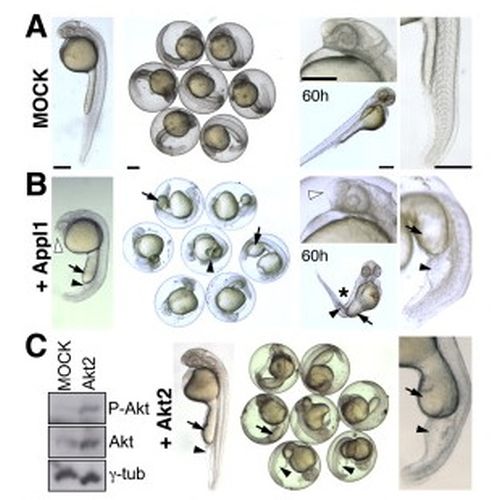The endosomal protein Appl1 mediates Akt substrate specificity and cell survival in vertebrate development.
During development of multicellular organisms, cells respond to extracellular cues through nonlinear signal transduction cascades whose principal components have been identified. Nevertheless, the molecular mechanisms underlying specificity of cellular responses remain poorly understood. Spatial distribution of signaling proteins may contribute to signaling specificity. Here, we tested this hypothesis by investigating the role of the Rab5 effector Appl1, an endosomal protein that interacts with transmembrane receptors and Akt. We show that in zebrafish, Appl1 regulates Akt activity and substrate specificity, controlling GSK-3beta but not TSC2. Consistent with this pattern, Appl1 is selectively required for cell survival, most critically in highly expressing tissues. Remarkably, Appl1 function requires its endosomal localization. Indeed, Akt and GSK-3beta, but not TSC2, dynamically associate with Appl1 endosomes upon growth factor stimulation. We propose that partitioning of Akt and selected effectors onto endosomal compartments represents a key mechanism contributing to the specificity of signal transduction in vertebrate development.

- Cell 2008 May 2;133(3):486-97
- 2008
- Developmental Biology
- 18455989
- PubMed
Enabled by:
